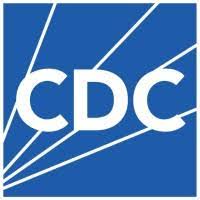 Sterilization & Disinfection
Sterilization & Disinfection
Enhanced PPE among updates to improve instrument sterilization safety
Editor's Note Updates to evidence-based guidance in the AORN 2026 Guideline for the Care and Cleaning of Surgical Instruments were summarized in a November 7 AORN news story to outline key updates such as new PPE recommendations for perioperative staff working in the decontamination area. For example, new recommendations in…
Session: Developing a complex spine and total joint service line program in the ASC

Editor's Note High-volume joints and spine procedures in ambulatory surgery centers (ASCs) require more than a “healthy” patient—success hinges on rigorous screening, block-and-flow efficiency, tech-enabled standardization, and a culture where anyone can say “stop,” this session’s speakers said. Comprising Robert Bray, MD, FAANS, CEO and founding director of DISC Sports…
Session: Bridge the gap—Finding a common mission between the OR and SPD

Editor's Note Rebuilding trust and redefining teamwork between the OR and sterile processing department (SPD) turned a near-failure into a high-functioning system at UCLA Health, according to Ronald Perez, JD, MSN, RN, NEA-BC, CNOR, executive director of perioperative services, and Jasmine Briones, MSN, RN, CNOR, director of perioperative services. What…
Considerations for external transportation of processed medical devices

The centralization of medical device processing to one facility is becoming more prevalent. Centralizing sterile processing activities reduces expenses while concentrating expertise. However, this also introduces new concerns. When sterile processing is located within the same building where instrumentation is used, transport occurs over smooth floors in a controlled environment…
Tray-based setups cut OR waste, setup time while boosting workflow satisfaction

Editor's Note Introducing preassembled surgical trays sharply reduces OR waste and setup time while improving staff workflow satisfaction, Surgeries October 8 reports. The prospective study, conducted in a high-volume German urology center, compared tray-based setups with the “standard approach” for preparation across 64 procedures and found measurable ecological and operational…
CDC reports 460% surge in drug-resistant NDM-CRE infections

Editor's Note NDM-producing carbapenem-resistant Enterobacterales are climbing fast and straining treatment choices, according to a September 23 release from the Centers for Disease Control and Prevention (CDC) and published in the Annals of Internal Medicine. The agency warns NDM-CRE infections rose more than 460% in the US from 2019 to…
Report warns sterile processing staffing crisis threatens surgical safety

Editor's Note Sterile processing departments (SPDs) face chronic staffing shortages and underinvestment that put surgical patients at risk, according to a Surgical Directions September 18 report. It emphasizes that sterile processing technicians, who decontaminate, inspect, and sterilize every surgical instrument, remain under-recognized despite their central role in surgical safety. Per…
Centralized sterile processing cuts costs, complexity for four ASCs

Once limited to hospital inpatient settings, total joint surgery is increasingly common at ambulatory surgery centers (ASCs) across the US. What is not so common is performing these complex procedures without the benefit of an onsite sterile processing department (SPD). And yet, that is exactly what we have accomplished at…
Centralized sterile processing: An ASC's journey to offsite sterilization

Editor’s Note: This page is a companion piece to the main article, Centralized sterile processing cuts costs, complexity for four ASCs. Implementing offsite sterilization is a major project. At Total Joint Specialists, our journey began gradually, growing in scope over time as the team became comfortable with the process…
Study: Clean paper towels match or exceed sterile options in surgical hand antisepsis

Editor's Note A study published July 9 in the American Journal of Infection Control found that clean paper towels are as effective—and in some cases more efficient—than sterile alternatives for surgical hand antisepsis. The results support their use as a cost-saving and safe alternative to sterile hand-drying products in surgical…

 Free Daily News
Free Daily News